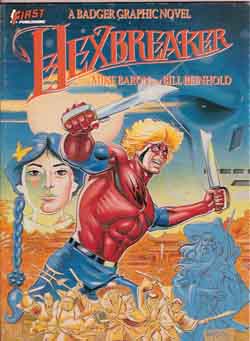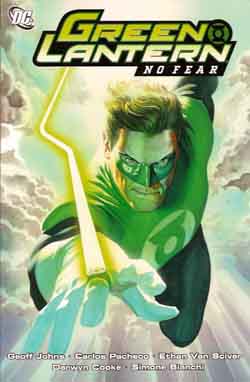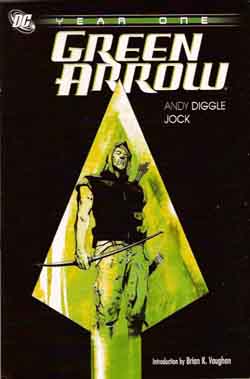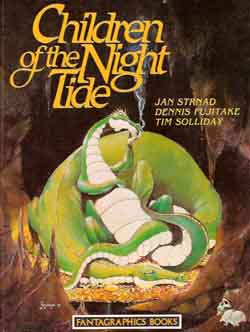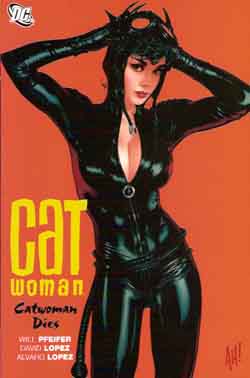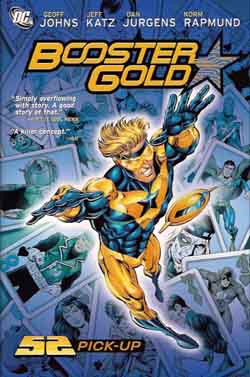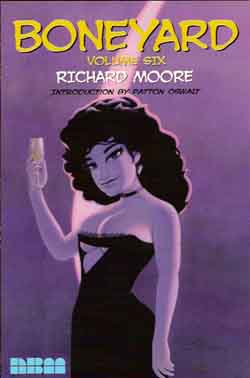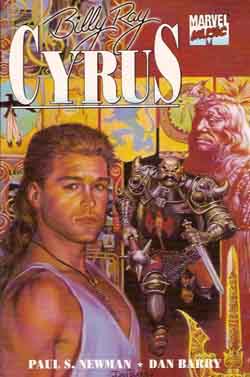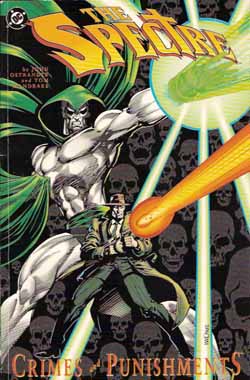UK EDITION
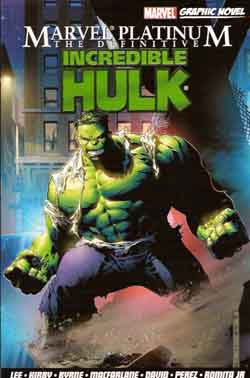
By various (Marvel/Panini Publishing UK)
ISBN: 978-1-905239-88-7
As the second Hulk film screened across the world Marvel quite sensibly released a batch of tie-in books and trade paperback collections to maximise exposure and hopefully cater to fans who want to follow up with the comics experience. Under the Marvel Platinum/Definitive Editions umbrella this treasury of tales reprints some landmarks by name-creators that whilst far from being “definitiveâ€, do provide a snapshot of just how very well that simplistic man-into-monster concept can work.
In addition to a lavish and thorough career overview and origin in the extensive text features section this volume gathers the entire first issue by Stan Lee, Jack Kirby and Paul Reinman (which I recently reviewed more fully in Marvel Masterworks: The Incredible Hulk 1962-1964 (ISBN: 978-1-905239-89-4). This inevitable classic is promptly followed by Fantastic Four #25 and#26, a cataclysmic clash that had young heads spinning in 1964 and lead directly to the Emerald Behemoth regaining a strip of his own in Tales To Astonish.
In ‘The Hulk Vs The Thing’ and ‘The Avengers Take Over!’ by Lee, Kirby and George Bell (AKA a moonlighting George Roussos) – a fast-paced, all-out Battle Royale occurs when the disgruntled man-monster reaches New York and only an injury-wracked FF can halt his destructive rampage. More a definitive moment in the character development of the Thing, the action is ramped up when a rather stiff-necked and officious Avengers team horns in claiming jurisdictional rights on “Bob†(this tale is plagued with pesky continuity errors which would haunt Stan Lee for decades) Banner and his Jaded Alter Ego. Notwithstanding the bloopers, this is one of Marvel’s key moments and still a visceral vital read.
Herb Trimpe and Sal Buscema both drew long and well-regarded sequences for the Hulk’s monthly comic although their contribution is rather ignored these days. They are both represented by a single story here from Incredible Hulk #124 (cover-dated February 1970). ‘The Rhino Says No!’ is written by Roy Thomas with Buscema inking Trimpe in a tribute to The Graduate where the Leader and the aforementioned Rhino stop the wedding of Bruce Banner and Betty Ross.
Swiftly following is the first appearance of The Defenders from Marvel Feature #1 (December 1971) wherein the Hulk joins forces – grudgingly – with Dr. Strange and that ultimate anti-hero The Sub-Mariner to save the world from the deathbed master plan of demented super-scientist Yandroth. ‘Day of the Defenders!’ was again written by Thomas, pencilled by Ross Andru and inked by the legendary Bill Everett, and of course it launched one of the most successful team-books of the 1970s and 1980s.
John Byrne had a brief and controversial run on the Hulk in the 1980s, represented here by ‘Member of the Wedding’ from #319 (May 1986). Written and drawn by Byrne, with inks from Keith Williams it was another action-packed wedding issue.
From the immensely popular Peter David/Todd McFarlane run comes ‘Vicious Circle’ (issue #340, February 1988) wherein The Hulk – who has reverted to the less powerful but smarter grey version previously only seen in his very first appearance – ends up in an unwinnable fight with the X-Men’s Wolverine. I’m sure I don’t need to remind you that Wolvie actually debuted as a throwaway villain in Incredible Hulk #180-181 in 1974.
Taking up a major portion of the book is the complete Future Imperfect miniseries originally released in December 1992-January 1993. Written by David and illustrated by George Perez it has the Hulk travel into the future to defeat his older, nastier self “The Maestroâ€, a tyrannical despot who has enslaved humanity.
This volume concludes with the latter part of a superb two-issue epic from Incredible Hulk Volume III, 2001. Paul Jenkins scripted the brooding and poignant ‘Always on My Mind’ (from issue #25) by John Romita Jr. and inked by Tom Palmer; but although visually stunning the story suffers from the exclusion of the first part (both can be seen in the recent Marvel Masters: The Art of John Romita Jr. (ISBN: 978-1-905239-73-3), and a less charitable reviewer might wonder why with such a wealth of great Hulk material around the editors chose to truncate something already in print in favour of something readers don’t have easy access to?
Still and all, this book has some classic moments, many wonderful creators and of course a humungous amount of carnage and destruction. What more can any fan want?
© 1962, 1964, 1970, 1971, 1986, 1988, 1992, 1993, 2001, 2008 Marvel Characters Inc. All Rights Reserved.

